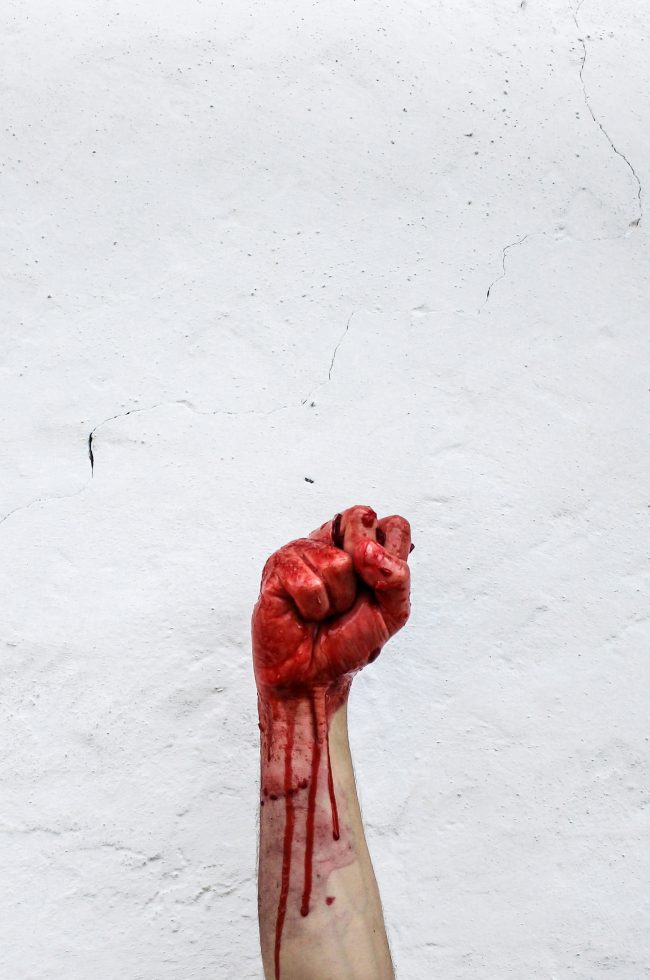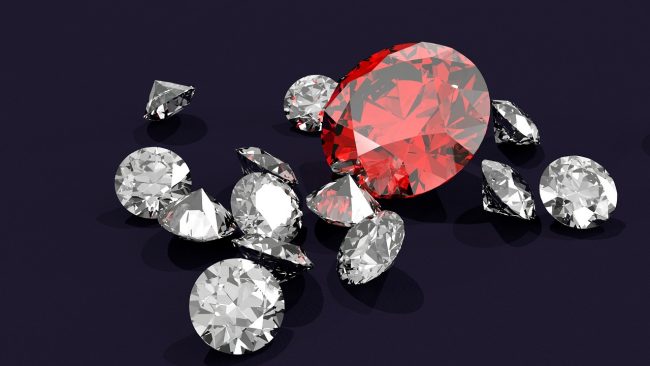Blood Diamonds

The Special Court for Sierra Leone continues its proceeding with the trial of ex-Liberian President Charles Taylor and the objective of the prosecution is to prove that Charles Taylor was in possession of illegally mined diamonds and that he used the said diamonds to fund the activities of rebels who murdered, raped and mutilated civilians and conscripted thousands of child soldiers in Sierra Leone.
Established by a joint agreement of the United Nations and the Government of Sierra Leone, the Special Court is charged with prosecuting those responsible for war crimes committed in the Sierra Leonean civil war from 1991 to 2002, which claimed 75,000 lives and coincided with Liberia’s civil war (1989 to 1996). The Liberian president was accused by the UN of complicity and supporting the Revolutionary United Front (RUF) insurgency in neighbouring Sierra Leone by providing weapons and training in exchange for diamonds. The conflict in Sierra Leone was marked by particular brutality, especially rape and amputation. Boys as young as 7 years old were abducted and conscripted into the RUF, supplied with weapons and trained to kill, shot up with cocaine and sent to raid villages targeting civilians, especially women and children who were subjected to cruel amputation of feet, hands, ears, lips and noses. Control of Sierra Leone’s diamond reserves was the primary cause of the Sierra Leone war.
However, since the trial of Mr Taylor began, the tribunal has maligned the character of some of the most respected citizens of the continent. First up was former president Nelson Mandela, whose character the prosecution’s star witness Mia Farrow called to question by suggesting that he embraced questionable characters when he invited Charles Taylor to a Charity dinner in 1997. According to Mia Farrow, Mrs Graca Machel-Mandela was unhappy with the fact that Taylor had been invited to the event, testifying “Ms Machel said something to this effect: ‘No, no, you don’t want to be photographed with this man. This is the president of Liberia. He is not supposed to be here’'”. This was the same dinner at which Mia Farrow testifies that supermodel Naomi Campbell flirted with Taylor, in return for which she received a promise to be gifted with diamonds. Little did Naomi know at the time that Taylor, who has no diamond processing facilities, simply knocks off huge chunks of the raw stones and flings them in any direction he sees fit. Ms Campbell’s ex-agent Carole White testified that when the supermodel received the stones, she was not impressed as “They were quite disappointing because they were not shiny.” Perhaps it would have benefitted the prosecution more to show that Naomi Campbell sent the dirty stones to be processed and exchanged for ‘shiny’ gems which she could wear around her sultry neck or finger; instead they proved conclusively that Ms Campbell donated the stones to Nelson Mandela Children’s Fund through its Chief Executive Jeremy Ractliffe. Ractliffe on his part, held on to the stones: ‘to avoid embarrassment to Ms Campbell, the fund or Mr Mandela’, fueling a furore over Ratcliffe’s intention for not disclosing the receipt of the stones to the foundation or its Trustees. Now that we have dispensed with Ms Campbell, can we move on to the next personality? In comes the former president of Nigeria.
This interesting angle surfaced last week when a former Minister to Nigeria’s former President Olusegun Obasanjo accused Mr Obasanjo of betraying Charles Taylor. According to Femi Fani-Kayode, former Aviation Minister and aide to President Obasanjo who had brokered the deal in which Taylor was persuaded to step down as president of Liberia by the African Union, the agreement had been for Taylor to be given asylum in Nigeria and that he would be protected from prosecution and allowed to live quietly in the Niger-Delta area of Nigeria on the condition that he would stay out of Liberian politics. Mr Obasanjo later succumbed to pressure from the US to give Taylor up for prosecution. Taylor was later apprehended as he tried to flee Nigeria.
Like many African leaders, Charles Taylor’s journey to the Special Court is nothing short of remarkable. Born in Arthington, near Monrovia, on 28 January 1948, Taylor was a student at Bentley College in Waltham, Massachusetts USA from 1972 to 1977, earning a degree in economics. In 1979, he led a demonstration at the Liberian Mission to the United Nations in New York City, protesting then-president of Liberia William Tolbert, who was on a state visit to the U.S. at the time. He was later invited back to Liberia by Tolbert and supported the 1980 coup led by Samuel Doe, in which Tolbert was murdered. Taylor became a senior member of Doe’s government but was fired from his position in 1983 for embezzling $1,000,000. Taylor fled to the United States but was arrested the following year and detained in Plymouth, Massachusetts. A few months later, Taylor escaped with the help of four other inmates from the maximum security prison. His accomplices were all apprehended but Taylor escaped and was assumed to have undergone guerilla training in Libya, travelling to Côte d’Ivoire, from where he founded the National Patriotic Front of Liberia (NPFL). In late 1989, funded by the Libyan government, Taylor’s NPFL launched an insurgency from Côte d’Ivoire to overthrow the Doe regime. By 1990, his forces controlled most of the country but his victory was short-changed by the breaking away of one of his senior compatriots, Yommie Johnson, who formed the Independent National Patriotic Front of Liberia (INPFL) and captured Monrovia. By this time, Liberia had plunged deeply into civil war. Johnson’s forces captured and tortured Samuel Doe to death fragmenting the country into an ethnic conflict in which seven factions fought to gain control of the country’s natural resources, notably its diamond reserves. When the civil war ended in 1996, Taylor ran for president and won a landslide victory by intimidation, campaigning under the infamous slogan “He killed my ma, he killed my pa, but I will vote for him.” His victory was attributed to fear that he would resume the war if he lost. In 2001 the UN applied sanctions on the Liberian diamond trade. Two years later, under pressure from internal wrangling and the international community, Taylor stepped down as president, but not before he had added the charge of consorting with International Terrorists to his list of crimes. In 1998, al-Qaeda allegedly bought gems from Liberia to fund its operation of bombing US embassies in Tanzania and Kenya.
So, Taylor, is an egomaniacal, pilfering, sociopath who used any and all means to gain control of the power and diamond resources of Liberia and neighbouring Sierra Leone. We get it and he should pay but one can’t help wondering… if Naomi Campbell with her international circle of haute couture contacts was unable to find much use for the diamonds, how exactly was it that the hemmed-in Taylor was able to use the blood diamonds to fund the activities of the rebels, as he had no facilities to process the stones? To be exchanged for currency that buys arms and ammunition, the stones must be valued and sold. If the Tribunal needs to track the diamonds through the pocketbooks of every anorexic female that the war-lord wooed with the diamonds, surely it must be easier to find the diamond traders who pawned the stones for him. It is also entirely possible that he paid for the arms with the dirty stones also. In which case, he would have parted with a lot more than a fist full of diamonds. Would it not actually be easier for the tribunal to track the diamonds through the arms dealers who supplied the child soldiers in Sierra Leone and Liberia with AK-47 rifles? Might the huge stacks of stones that made their way into the diamond market be a less daunting trail? It would certainly seem less ridiculous. Why is the tribunal not looking at those complicit in trading and processing these diamonds? How hard can it be? How many diamond trading firms operate in the region? How can these be overlooked or considered free of blame but Campbell was put on the spot for flirting with a good-looking man at dinner? Or worse still, Mandela was accused of inviting a President to a charity dinner, while the arms dealers who supplied millions of dollars worth of arms to fuel the conflicts remain nameless? What exactly is this song and dance about?

Having said that, lessons have been learned here. Topping the chart is the lesson: If you must receive gifts from shady suitors, make sure you don’t come short in the bargain. Ms Campbell’s headache would have been worth it if she had at least got the diamonds in their shiny form and photographed while wearing them. While it remains unclear what she paid for the ‘dirty stones’, she seems to have come up with the short end of the stick in this particular dirty deal. Certainly, the supermodel’s notoriety hit a new low with this incident but her high street value has all but plummeted, as her appearance reportedly quadrupled the media coverage of the tribunal’s proceedings. In the end, as the defence put it, the face-off between Ms Campbell and her erstwhile agent Carole White seemed to have been the only reason that the supermodel ended up at the trial, but this cat-fight might have actually helped rather than hurt the ageing model’s career as it comes to a natural end. Another notable lesson: Be careful whom you invite to dinner, even if you reason that you could put the proceeds of their ill-gotten gains to better use through your good deeds.
Africa produces two-thirds of the world’s diamonds, 80% of which are sold in New York. For most of the 20th century, over 80% of the world’s rough diamonds passed through south African diamond traders De Beers, a privately held company founded by Cecil Rhodes, an English-born businessman and politician in South Africa. Rhodes was a colonialist and ardent believer in imperialism who was also the founder of the state of Rhodesia (modern Zambia and Zimbabwe). Despite its pledge to support the Clean Diamond Trade Act, the international Diamond Industry has fallen short of implementing the necessary policies for self-regulation. The retail sector in particular fails to provide sufficient assurance to consumers that the diamonds they sell are conflict-free. “Diamonds are a girl’s best friend”. How many women would still feel this way if they knew the real cost of their glittery bling?
